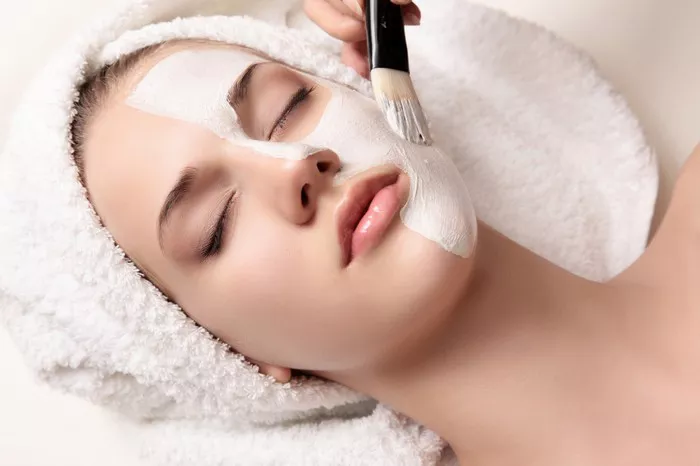Everyone desires healthy, glowing skin, but achieving it can often feel overwhelming with all the different products, trends, and advice out there. The truth is, a good skincare routine doesn’t have to be complicated. It’s about understanding your skin’s needs and finding a simple, effective routine that works for you. In this article, we will walk you through the best skincare steps to achieve radiant, healthy skin. Whether you have oily, dry, combination, or sensitive skin, following the right steps can make a big difference. Let’s break it down!
Why Is Skin Care Important?
Taking care of your skin is more than just about looks. Your skin is the largest organ of your body, acting as a barrier against harmful elements like bacteria, pollution, and the sun’s UV rays. When your skin is healthy, it performs its protective functions more effectively. Proper skin care also helps prevent common skin issues like acne, dryness, fine lines, and uneven skin tone. It also helps your skin look fresh, smooth, and glowing. Skincare isn’t just about pampering yourself; it’s about giving your skin the nourishment and care it needs to stay healthy and strong.
Understanding Your Skin Type
Before diving into the best skin care steps, it’s important to know your skin type. Different skin types require different care, and understanding your skin’s unique needs is key to a successful skincare routine. Here are the basic skin types:
Normal Skin: Balanced skin with no excessive dryness or oiliness.
Oily Skin: Skin that produces excess oil, often leading to shine and clogged pores.
Dry Skin: Skin that feels tight, rough, or flaky due to lack of moisture.
Combination Skin: Skin that has a mix of oily areas (usually the T-zone) and dry or normal areas.
Sensitive Skin: Skin that reacts easily to products, often experiencing redness, itching, or burning.
Knowing your skin type will guide you in choosing the right products and steps for your routine. Now, let’s explore the best skincare steps to keep your skin at its best.
1. Cleansing: The First and Most Important Step
Why Cleansing is Important
Cleansing is the foundation of any skincare routine. It removes dirt, oil, makeup, and environmental pollutants that can build up on your skin throughout the day. Cleansing also prevents clogged pores, which can lead to acne and other skin problems. It’s crucial to cleanse your skin both in the morning and at night, as overnight sweat, oil, and products can accumulate on the skin.
How to Cleanse Your Skin Properly
When it comes to cleansing, always choose a gentle cleanser that matches your skin type. Harsh cleansers can strip the skin of its natural oils, leading to dryness or irritation.
For Normal Skin: Choose a mild, hydrating cleanser that doesn’t over-dry your skin.
For Oily Skin: Look for a gel or foaming cleanser that helps control oil without being too harsh.
For Dry Skin: Use a creamy, moisturizing cleanser that won’t strip your skin’s natural moisture.
For Combination Skin: Opt for a balanced cleanser that won’t irritate dry areas but controls oil in the T-zone.
For Sensitive Skin: Choose a fragrance-free, calming cleanser that avoids harsh chemicals.
Cleansing Tips
Use lukewarm water, as hot water can dry out your skin.
Gently massage the cleanser into your skin using your fingertips, avoiding scrubbing or harsh rubbing.
Cleanse for about 30 seconds to a minute to ensure all dirt and oil are removed.
Pat your face dry with a soft towel instead of rubbing it.
2. Exfoliation: Removing Dead Skin Cells
What is Exfoliation?
Exfoliation is the process of removing dead skin cells from the surface of your skin. This helps prevent clogged pores, smooths the skin’s texture, and promotes cell turnover, leaving your skin looking fresh and radiant. Regular exfoliation can also help improve the absorption of other skincare products.
How Often Should You Exfoliate?
Exfoliating once or twice a week is generally enough for most people, though this can vary depending on your skin type:
For Oily Skin: You might benefit from exfoliating more often (2-3 times a week).
For Dry or Sensitive Skin: Once a week is typically enough.
For Normal or Combination Skin: Twice a week should be fine.
Types of Exfoliators
There are two main types of exfoliators: physical and chemical.
Physical Exfoliants: These contain small particles (like sugar, salt, or beads) that physically scrub away dead skin. Be careful not to use harsh scrubs that can irritate the skin.
Chemical Exfoliants: These contain acids (like alpha hydroxy acids or beta hydroxy acids) that dissolve dead skin cells. These are generally gentler and better suited for sensitive skin.
Exfoliation Tips
Always apply exfoliants to clean, dry skin.
Avoid over-exfoliating, which can cause irritation and sensitivity.
If you’re new to exfoliation, start slowly and increase frequency as needed.
3. Toning: Balancing and Refreshing Your Skin
What is a Toner?
Toners are liquids that help balance your skin’s pH, tighten pores, and prepare your skin to absorb the next products in your skincare routine. They can also hydrate and refresh the skin, especially after cleansing, and help remove any residual impurities.
Why Use a Toner?
Restores pH Balance: Cleansers can sometimes leave the skin slightly alkaline, while toners restore the skin’s natural acidic pH.
Minimizes Pores: Some toners contain ingredients that help tighten and shrink pores.
Provides Hydration: Many toners contain moisturizing ingredients like glycerin or hyaluronic acid, which help keep your skin hydrated.
How to Apply Toner
After cleansing, apply a small amount of toner to a cotton pad.
Gently swipe the cotton pad over your face, avoiding the eye area.
You can also apply toner by patting it into your skin with your hands for a more hydrating effect.
4. Serum: Targeting Specific Skin Concerns
What is a Serum?
Serums are concentrated formulas designed to target specific skin concerns like wrinkles, dark spots, acne, or dryness. They usually contain active ingredients such as vitamin C, hyaluronic acid, retinol, or peptides, which are absorbed deeply into the skin for maximum effect.
Types of Serums
Hydrating Serums: These serums contain ingredients like hyaluronic acid or glycerin that draw moisture into the skin, making them perfect for dry skin.
Anti-aging Serums: These contain retinol, peptides, or vitamin C to help reduce wrinkles and fine lines.
Brightening Serums: Serums with ingredients like vitamin C or niacinamide can help brighten dull skin and even out skin tone.
Acne-fighting Serums: These usually contain salicylic acid or niacinamide to target acne and reduce inflammation.
How to Apply Serum
After toning, apply a few drops of serum to your face.
Gently pat the serum into your skin, focusing on areas of concern.
Allow the serum to absorb before moving on to the next step in your routine.
5. Moisturizing: Hydrating Your Skin
Why is Moisturizing Essential?
Moisturizing is crucial for keeping your skin hydrated and protected. Even if you have oily skin, moisturizing is still necessary, as it helps maintain the skin’s water balance and prevents the production of excess oil. Moisturizing also keeps the skin soft, smooth, and plump, reducing the appearance of fine lines.
Choosing the Right Moisturizer for Your Skin Type
For Oily Skin: Opt for lightweight, oil-free, or gel-based moisturizers that hydrate without adding extra shine.
For Dry Skin: Look for thicker, cream-based moisturizers that lock in moisture and prevent dryness.
For Sensitive Skin: Choose fragrance-free, hypoallergenic moisturizers to avoid irritation.
For Combination Skin: Consider a balanced moisturizer that provides hydration without being too heavy or light.
How to Apply Moisturizer
Apply moisturizer to damp skin to help seal in moisture.
Gently massage the product into your face and neck in upward, circular motions.
Don’t forget your neck, as the skin there is just as delicate as your face.
6. Sunscreen: Protecting Your Skin from Harmful UV Rays
Why Sunscreen is Crucial?
Sunscreen is arguably the most important step in any skincare routine. UV radiation from the sun can cause premature aging, dark spots, and even skin cancer. Applying sunscreen every day, even when it’s cloudy or you’re indoors, is essential to protecting your skin from the harmful effects of UV rays.
Choosing the Right Sunscreen
For Daily Use: Choose a broad-spectrum sunscreen with at least SPF 30. This will protect against both UVA and UVB rays.
For Sensitive Skin: Opt for mineral sunscreens that contain zinc oxide or titanium dioxide, as these are less likely to cause irritation.
For Oily Skin: Look for oil-free, mattifying sunscreens that won’t add extra shine.
For Dry Skin: Choose a moisturizing
sunscreen with hydrating ingredients like glycerin or hyaluronic acid.
How to Apply Sunscreen
Apply sunscreen to your face, neck, and any exposed skin 15 minutes before going outside.
Don’t forget areas like your ears, hands, and the back of your neck.
Reapply every two hours, or more often if swimming or sweating.
Conclusion
Having a consistent skincare routine is the key to healthy, glowing skin. By following these essential steps—cleansing, exfoliating, toning, applying serums, moisturizing, and protecting with sunscreen—you give your skin the best chance to stay youthful, radiant, and strong. Remember, skincare is not a one-size-fits-all approach, so feel free to adjust your routine based on your skin type and needs. With patience and consistency, you’ll be on your way to beautiful, glowing skin!
Related Topics



































